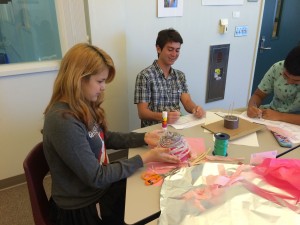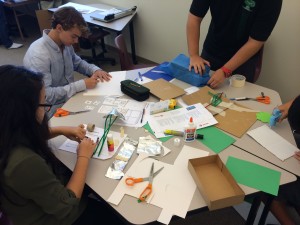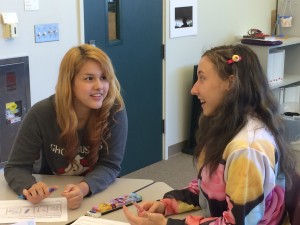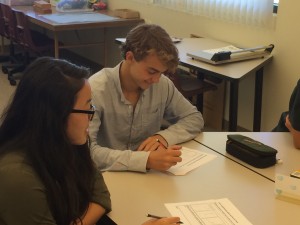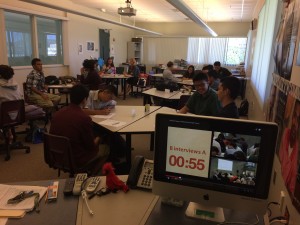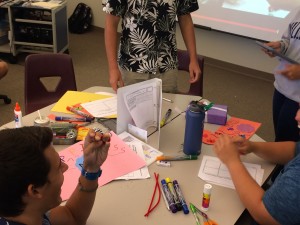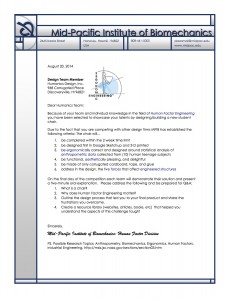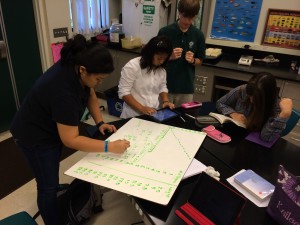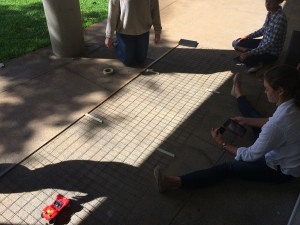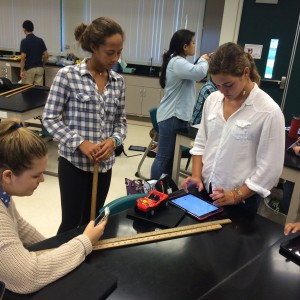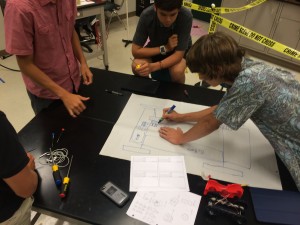Well here we are already more than two weeks into the start of the new year. Something new for me this year – I am teaching two different classes: 10th grade STEM for our integrated Mid-Pacific eXploratory (MPX) and a new course that is just starting this year which is Innovative Design Technology – a one year course focusing on the design process and wrapping in rigorous science content. I am co-teaching this class with my friend and colleague Lori Nishiguchi – we each have one section of this course.
As a result, I’m going to blog in this space for both courses – sometimes separately, sometimes, like today, a general summary of what both classes have been up to. As I said before the intent of this blog is to both inform about what we are doing in class, but I also use it as a space for me to share the work we do, the decision-making and rationale behind the kinds of efforts we make, and broader questions about education and the future of learning. Hopefully if you read this, something here will resonate for you.
So here are a few highlights from the past couple of weeks.
In the design class,
the most engaging work we’ve done so far was running the Stanford d.school crash design course. Designed to take no more than an hour and a half, it is a quick iterative process that walks the participants through the design process beginning to end in the midst of trying to redesign a gift giving experience. Lori and I ran this on the second full day of class and it gave us both a chance to see how pacing, tempo and group dynamics were in our class, as well as a means to introduce the underlying foundation of good design principles that we plan to rely on for the next eight months. If you’re not familiar with their work, the homepage for their d.school is here. I’ve embedded the design course video below in case it would be interesting to look at. Below that are a few pictures from the activity in our class which I think does a nice job showing the engagement and effort in this very quick process. What was most interesting was the debrief with the students revealed both their interest in understanding the importance of getting to the empathy and the value of understanding the end-user experience, as well as the high pressure nature of quick prototyping and iterative design.
I’ve created a Flickr page that will host all of the pictures as we take some during the school year – that is located here.
We’ve now launched into our first full design project which is redesigning all or some feature of a standard school student chair. Students have already gone out and interviewed their “clients” and have come up with some issues that they are looking to try and address and are now asked to design some sketches of what might solve the problem for students. The full design brief is pasted below.
In The MPX 10 STEM Class,
we have started with initial activities to lay the foundation for our year-long project in investigating urban transportation. The ultimate goal is really four steps: students being able to build and take apart bikes, students being able to design and build an electric bike from a standard bike frame, students designing a payload system for their electric bike to accomplish a course challenge, and the culminating set of activities around designing a more fully thought out urban system for transportation.
Although this set of challenges will be ongoing during the year, we will be doing breakaway work in a variety of other smaller projects and activities – both to create some other learning opportunities as well as to make sure our core content is covered in physics and algebra two. We spent the last week going back to some mathematics work around linear equations, and investigating constant motion which lends itself nicely to the beginning conversation around moving bikes as well as exploring linear functions and their modeling capabilities in the real world. A few pictures below show students white boarding, conducting experiments, and actually taking apart the battery-powered cars to investigate the way by which the batteries stored energy turns into motion.
Just like the design class, I’ll be keeping a Flickr account with a full set of photos here. The next blog posts will be more philosophical, but this was a good way to get started with year and what we’ve been working on. Last attachments for this post: the syllabi for the two courses which outline the main content areas, pedagogical practices, and assessment that we will be using in the courses.
MPX10 Stem 2014-15 Syllabus
Hines Design Technology Fall2014 Syllabus
E Kūlia Kākou
Let’s strive and aspire together

